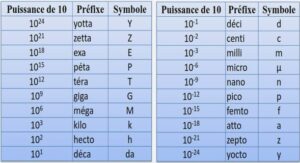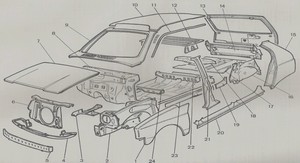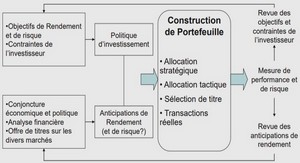Aluminum-Silicon
Casting Alloys Aluminum casting alloys with high content of silicon are one of the most widely used alloys in the automotive, aerospace and electronics industries. Due to their light weight, low thermal expansion coefficient, high corrosion resistant and superior casting characteristics, aluminum alloys became center of attention of producers and are replacing cast iron components. Due to high content of silicon, Al-Si alloys provide excellent castability. This attributes to the high fluidity of the molten metal and it is described as an ability to flow into a mold and fill the areas before molten metal solidified. It is known that fluidity of molten metal can be increased via increasing silicon content. Although higher amount of Si increases fluidity, formation of primary silicon particles in the melt can block the flow when Si content exceed 18-20%. Therefore, most of the Al-Si casting alloys contain no more than 18- 20% Si [1-3]. It is also reported that increasing Si content improves the strength and stiffness of the alloy while it reduces ductility. According to silicon content in microstructure, the cast aluminum alloys can be classified into three groups.
Hypoeutectic aluminum alloys contain 5% – 10% Si containing alloys while eutectic alloys contain 11% – 13% Si and hypereutectic alloys contain 14% – 20% Si. High silicon containing hypereutectic alloys have very good casting characteristics, low thermal expansion coefficient and very high wear resistance. On the other hand, eutectic alloys offer high corrosion resistance and good weldability, while hypoeutectic and near eutectic aluminum alloys provide good castability and high corrosion resistance. In addition to that small amount of Mg and Cu might be added to increase their mechanical properties. These alloys are usually heat treated in order to further increase mechanical properties and to obtain desired combination of strength and ductility. Therefore, these Al- Si alloys can extensively use in automotive, aerospace and military industries [5-8]. Table 2-1 represents the characteristics of some major Al-Si alloys. The characteristics are rated from 1 to 5, which indicates the worst and best respectively. The mechanical properties of Al-Si alloys can also be improved due to modification of eutectic silicon particles. The additions of chemical modifiers such as Sr or Na can lead the modification of silicon particles from their acicular brittle form to a more fibrous and rounded form and thereby significantly increase strength and elongation of the alloys [10-11]. Figure 2-2 shows the influence of Sr-modifier on eutectic silicon particles. As seen clearly, in unmodified state (a), the eutectic silicon particles are in acicular flakes form whereas the silicon particles in Sr-modified microstructure (b) represents fine and fibrous morphology.
The tensile properties of the Al-Si alloys can also be correlated with presence of intermetallic phases and porosities in the microstructure. Generally, increasing size and volume fraction of intermetallic phases causes to decrease tensile properties. In addition, porosity which forms due to the remaining gas gaps during casting process has a harmful influence on tensile properties. Heat treatment is a process that a metal is heated to a specific temperature, then cooled in a certain way to change the microstructure in order to obtain desired mechanical properties. Therefore, the aluminum alloys that can be exposed to heat treatment referred as heat-treatable alloys. Generally, aluminum alloys are subjected to variety of heat treatments such as T4, T5, T6 and T7. Mainly, T5 temper used for the castings which are artificially aged at temperatures between 170°C and 210°C. Due to precipitation hardening, higher mechanical properties can be achieved by T5 heat treatment applications. Also, low heat treatment temperatures avoid to formation of distortion or blistering therefore reduce the cost compared to T6 and T7 heat treatments. In T4 heat treatment process an aluminum alloy is subjected to solution heat treatment at elevated temperatures between 460 °C – 540 °C then, exposed to immediately quenching. The high solution heat treatment temperatures allow addition elements such as Mg and Cu to become supersaturated in solid solution. Subsequent the solution heat treatment, the quenching is performed to prevent the excess solute from precipitating.
Quenching is usually conducted in water. Typically, T4 heat treated alloys provides very high ductility. T6 heat treatment procedures are applied to achieve the highest strength and good ductility for a given alloy. This heat treatment includes three cycles; solution heat treatment (1), quenching (2) and artificial aging (3). As distinct from T4 treatment, additional artificial aging process in T6 treatment allows hardening constituents to re-precipitate in the matrix and thus, producing a hardening effect for alloy. A typical T6 heat treatment procedure is given in Figure 2-3 and schematically explained on Al-Cu phase diagram. As it is seen, the aluminum alloy is firstly heated (1) to a certain temperature which is above its solvus temperature, then kept at that temperature long enough to maximize the solid solubility of Cu in the matrix and to produce homogenous solid solution. During solution heat treatment, increasing soaking time allows to partial or complete dissolution of intermetallic phases and leads to achieve a uniform microstructure. Subsequent the solution heat treatment, the heated alloys immediately quenched (2) in water, oil or any other suitable environment in order to form a supersaturated solid solution and to inhibit the precipitation of phases such as Mg2Si and Al2Cu. As a last step of T6 treatment, quenched alloy is exposed to artificial aging procedure which indicates keeping alloy for certain period of time at temperature below solvus line. During artificial aging process, finely dispersed precipitates are obtained in the microstructure. These precipitates play crucial role to prevent the dislocation movements, thereby improve the mechanical properties of aluminum alloy [13].
EXPERIMENTAL PART
The use of aluminum alloys is steadily increasing to decrease the weight of the structural applications. In this regard, a large demand emerged to develop new aluminum alloys that can offer wide range of property levels to meet required durability and high mechanical properties. In this study, combinations of V, Zr and Mo transition metals were used to modify microstructural features and thereby to improve mechanical properties. The literature review reveals that the main types of intermetallic phases in permanent mold casting and high-pressure vacuum die castings are very similar but have different size. From this point of view, the experimental alloys were designed with different V, Zr and Mo combination and then produced by permanent mold casting method in order to choose promising alloys for high pressure vacuum die casting investigation and reduce the cost of research study. After producing experimental alloys, microstructural features and mechanical properties of the alloys were investigated on as-cast condition. Meanwhile, the heat treatment parameters were also optimized to further improve the mechanical properties and to evaluate precipitation potential.
Electrical conductivity analysis was also carried out to understand strengthening mechanism. Following the overall consideration on microstructural features and mechanical properties on as-cast and heat-treated conditions, few Al-Si-Mg alloys were chosen as candidate for high pressure vacuum die casting investigation. Then, selected Al-Si-Mg alloys were produced by high pressure vacuum die casting method. The microstructural features and mechanical properties of experimental alloys were analyzed on as-cast condition. In order to optimize heat treatment parameters, T5 and T6 heat treatments were applied to experimental alloys and microstructural features and mechanical properties were analyzed on heat treated conditions as well. EBSD studies were performed to measure grain size. Besides, electrical conductivity of the alloys was analyzed on as cast and heat-treated condition in order to understand strengthening method. Also, differential scanning calorimetry analysis was performed to understand the effect of transition elements on precipitation kinetics.
Alloy
Design As known well, addition elements are commonly used to obtain desired mechanical properties for aluminum alloys. In the present study, the addition elements were selected based on four strengthening methods; phase modification, solute solution strengthening, precipitation strengthening and intermetallic phase strengthening. The literature review on addition elements suggests that transition elements such as V, Zr and Mo can significantly increase the amount of solute atom in the matrix and lead the formation of thermally stable precipitates, thereby higher mechanical properties. Moreover, these elements can refine the aluminum grains and modify the eutectic Si and intermetallic phases in the microstructure. From this point of view, eight experimental alloys with different combination of V, Zr and Mo additions were designed and produced. As mentioned earlier, the main purposes of this study are (1) to develop a new Al-Si-Mg alloy for high pressure vacuum die casting applications, and (2) to reveal the effect of V, Zr and Mo additions on mechanical properties and microstructural features. The experimental alloys classified into two groups according to their Si content. First group experimental alloys contain 10% Si and designed to obtain high hardness, yield strength and ultimate tensile strength. On the other hand, the second group experimental alloys contain 8% Si with the aim of higher elongation at break (%).
Abstract |





